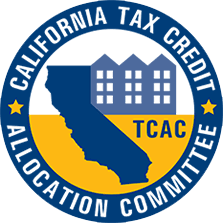"Our goal is for housing to be available to all that need it"
Steve Strain, Attorney
about our firm
Forward-looking legal solutions.
For over 40 years, Sabelhaus & Strain has been dedicated to driving real estate development and affordable housing in California. With deep-rooted experience in housing law and a passion for advocacy, we help clients navigate complex regulatory landscapes. As trusted advisors, we blend the integrity of our firm’s legacy with modern solutions to ensure our clients thrive in a changing world.
Practice areas
Get to know what we do best.
Trusted by major partners around the nation.
Legal Blog
Read about the latest news and relevant cases.

If you’re building affordable housing financing California projects, layering soft sources—CDBG, HOME, Infill Infrastructure Grant (IIG), and Transit-Oriented Development (TOD)—with 4% LIHTC and tax-exempt bonds can close gaps without blowing up compliance. Here’s a practical playbook for assembling the stack, sequencing awards, and keeping covenants aligned. Why Soft Funds Matter Fill the equity gap in 4% LIHTC/bond deals where private equity is thinner than 9% credits. Improve competitiveness for credit/bond allocations by demonstrating readiness, leverage, and deeper affordability. Finance public-facing, non-revenue items (off-sites, structured parking, streetscapes) that don’t pencil with hard debt. Core Programs at a Glance CDBG (federal/local): Flexible for infrastructure and eligible housing activities; brings federal cross-cutting rules (NEPA, URA, Section 3, sometimes Davis-Bacon). HOME (federal/local): Deep affordability; income/rent layering; long affordability terms; federal cross-cutting rules. IIG (HCD): Funds infrastructure serving infill housing—utilities, streets, parks, site prep—to unlock density and speed delivery. TOD (state/local): Capital for projects near transit; often supports site acquisition, structured parking, and complete-streets improvements tied to ridership and VMT reduction. Step-by-Step Stacking Strategy Define the Deal & Eligibility Early Map your land use, density bonus potential, CEQA strategy, and transit metrics (distance to station, headways, walk/bike access). Confirm LIHTC path (4% + bonds) and model the 50% Test so tax-exempt sources “touch” sufficient eligible basis. Build a Sources & Uses That Assigns Each Dollar a Job Hard costs: Pair bonds + equity for core residential costs. Infrastructure & off-sites: Target IIG and CDBG; keep them off the permanent loan sizing. Deeper affordability (30%–50% AMI units): Use HOME (and local trust funds) to underwrite long-term gap. Transit-adjacent costs (podium, bike rooms, first/last-mile): Point TOD here. Sequence Applications to Maximize Readiness Points Run a 3-lane timeline: (A) Site control/CEQA/entitlements, (B) Soft-fund filings (IIG/TOD/HOME/CDBG), (C) CDLAC/CTCAC joint application. Time soft awards to land before—or contemporaneously with—CDLAC/CTCAC so your credit/bond file shows committed gap sources. Underwriting Alignment (“One Set of Numbers”) AMIs, rent limits, utility allowance method, unit mix, and set-asides must match in every exhibit. Tie HOME/CDBG affordability terms to the “most restrictive wins” policy across TCAC, bonds, and local covenants. Re-run the 50% Test after each soft-fund award to confirm bond-financed basis still clears the threshold. Federal & State Cross-Cutting Rules—Plan, Don’t React Environmental: NEPA (for CDBG/HOME) and CEQA (state) need the right sequence; avoid committing federal funds before clearance. Labor: Davis-Bacon (federal) vs. California prevailing wage/skilled & trained—model costs for the stricter regime. Relocation: If acquisition/rehab or site clearing triggers URA, build timelines and budgets for notices, advisory services, and benefits. Procurement: Federal rules may require competitive procurement for certain scopes; coordinate with GC/CM early. Term Sheets & Award Conditions HOME/CDBG: Confirm loan vs. grant structure, interest rate, default waterfall, and rent layering exhibits. IIG/TOD: Identify reimbursable scopes, draw conditions, and completion deadlines; avoid scopes that can’t be certified cleanly at cost cert. All soft sources: Calendar performance milestones, extension request windows, and reversion/recapture triggers. Document the Covenant Crosswalk Create a single matrix listing: income limits, rent caps, UA method, student rule, marketing/fair housing plans, reporting cadence, affordability terms, events of default, cure periods. Add conflict-resolution language at closing so you aren’t trapped by incompatible terms later. Construction Draws & the 50% Test Establish a draw order that allows tax-exempt bonds to finance at least 50% of aggregate basis (land + building) by placed-in-service. Use trustee-held accounts and requisition procedures that trace bond proceeds to eligible costs; keep soft funds supporting non-basis or later-sequence items where helpful. Conversion & Cost Certification Track eligible basis line-by-line; segregate non-basis (community facilities, commercial shells) that soft funds often support. Prepare 8609 packages with consistent rent/income exhibits; confirm HOME/CDBG affordability riders match TCAC exhibits. Operations & Compliance Publish a property-specific compliance playbook: income certifications, NAU policy, UA update calendar, fee policy, and 8823 response steps. Schedule federal/state reporting (HOME/CDBG annuals, CDLAC/CTCAC monitoring, continuing disclosure if publicly offered bonds). Model Capital Stack (Illustrative) Tax-Exempt Bonds (construction & perm) 4% LIHTC Equity IIG (grant/loan) for utilities, streets, podium supports TOD funds for structured parking and station-area improvements HOME subordinate loan for deep affordability CDBG for off-site infrastructure/public improvements Local fee waivers/deferrals and project-based vouchers (where available) Common Pitfalls—and How to Avoid Them Duplication of Benefits: Don’t fund the same scope twice; assign scopes cleanly to each source and document it. UA/Rent Drift: Wrong UA methodology or late updates push gross rent over limits—calendar updates and lock a method. NEPA/CEQA Out-of-Sequence: Committing federal funds before NEPA clearance can derail awards—sequence decisions formally. 50% Test Miss: Too much early soft money before bond draws—pre-plan draw sequencing with counsel and the trustee. Conflicting Affordability Terms: Unreconciled HOME vs. TCAC limits—resolve in the crosswalk and recorded agreements. Closing Checklist (Soft-Fund Focus) Award letters with all conditions precedent satisfied Regulatory/affordability agreements (recorded) aligned with TCAC/bond covenants NEPA/CEQA determinations and labor compliance plans Intercreditor/subordination agreements with soft lenders Updated sources/uses and basis schedule confirming 50% Test Draw/requisition procedures (trustee, bank, and soft-fund portals) Compliance calendar and reporting templates Where Counsel Adds Value Structuring: Puts the right costs under the right source; pairs IIG/TOD with eligible infrastructure while protecting basis. Sequencing: Aligns TEFRA, CDLAC/CTCAC hearings, and soft-fund timelines to hit allocation and closing windows. Covenant Harmony: Drafts exhibits so “one set of numbers” governs; embeds conflict-resolution clauses. Compliance-by-Design: Builds NAU, UA, labor, and reporting systems so operations meet the strictest standard automatically. Ready to build a financeable, compliant stack without surprises? Contact us to discuss affordable housing financing California strategies that layer CDBG, HOME, IIG, and TOD with LIHTC and bonds—plus a timeline and document plan tailored to your project.

When your project pencils with 4% LIHTCs, tax-exempt bonds are usually the engine that makes the capital stack move. This guide walks first-time and growth-stage developers through roles, steps, CDLAC/CTCAC coordination, documents, and a realistic closing timeline—plus how tax-exempt bond financing counsel keeps everything on track. What Bond Financing Does (and When It Fits) Pairs with 4% LIHTCs; equity is lower than 9% deals but allocations are generally more available. Requires a qualified private activity bond issue from a conduit issuer (city, county, or state-level authority). Triggers the 50% Test: at least 50% of aggregate basis of land/building must be financed with tax-exempt bonds for the 4% credits to flow. Works best for larger projects or those with substantial soft funding to close the equity gap. Key Players & Their Roles Borrower/Sponsor: The project ownership entity. Conduit Issuer: Public agency that issues the bonds on your behalf. Investor/Syndicator: Purchases the 4% credits (via partnership equity). Bond Purchaser/Underwriter: Bank (private placement) or investment bank (public offering/limited offering). Credit Enhancer (if any): Bank or agency providing enhancement/liquidity. Trustee: Holds funds, administers indenture and payments. Low Income Housing Tax Credit attorney / tax-exempt bond financing counsel: Structures deal, manages issuer and purchaser requirements, ensures tax and regulatory compliance. Municipal/land-use counsel, lender’s counsel, and issuer’s counsel round out the table. The Process at a Glance (Start→Finish) Pre-Feasibility & Inducement Choose issuer and confirm path (private placement vs public sale). Adopt inducement resolution (lets you reimburse eligible pre-close costs and start the formal process). Start TEFRA* prep: draft notice for public hearing and approval required for private activity bonds. (*TEFRA = tax law public-approval step for bond-financed projects.) CDLAC/CTCAC Joint Application Use the unified application to seek both bond allocation (CDLAC) and credit reservations (CTCAC). Align your scoring/readiness strategy: site control, zoning/entitlements, soft funds, and shovel-readiness milestones. Coordinate with investor and lenders so pro formas and covenants match what you’re filing. Credit, Underwriting & Ratings (Deal-Dependent) Private placement: bank credit committee underwrites construction/perm terms and bond purchase agreement. Public sale: preliminary official statement (POS), ratings (if applicable), and investor roadshow; bond insurer/credit enhancement as needed. TEFRA Hearing & Approval Issuer conducts the public hearing and provides the necessary approval. After TEFRA approval, the bonds qualify as tax-exempt if all other tax rules are met. Allocation & Award Letters CDLAC allocation for volume cap (the bond authority) and CTCAC reservation of 4% credits. Confirm any issuer-level approvals, local resolutions, or state-level sign-offs tied to timing. Document Drafting & Negotiation Indenture/Trust Agreement (or Funding Loan Agreement for private placements). Loan Agreement/Regulatory Agreement (income/rent restrictions, use covenants). Tax Certificate & 50% Test planning; arbitrage/rebate covenants. Bond Purchase Agreement or Underwriting Agreement and Continuing Disclosure Agreement (if publicly offered). Equity documents: partnership/operating agreement, capital contribution and adjuster mechanics aligned to construction milestones. Intercreditor/assignment documents among construction, perm, soft lenders, and the trustee. Pre-Closing Conditions Third-party reports: appraisal, market study, environmental (Phase I/II), PNA/PCNA, plans/specs. Title/survey: endorsements, access, easements, and legal descriptions that match plans and lender requirements. Insurance: builder’s risk, GL, professional, workers comp; OCIP/CCIP if used. Construction: GMP or similar, schedule of values, and contingency levels acceptable to investor and lenders. Closing & Funding Execute bond, loan, equity, and regulatory documents. Fund into trustee-held accounts; align draws with bank/investor requisition procedures. Record regulatory/land-use restrictions; confirm cost-of-issuance caps and delivery of required opinions (borrower, tax, enforceability, issuer). Post-Closing Administration Track eligible basis; monitor 50% Test, applicable fraction, and draw sequencing. Comply with continuing disclosure (if public bonds), arbitrage rebate calculations, and CDLAC/CTCAC reporting. Prepare for placed-in-service, 8609 issuance, and conversion to perm. CDLAC/CTCAC Coordination Tips One Story, One Set of Numbers: Your joint application, investor underwriting, and bond documents need the same rents, incomes, AMIs, UAs, and unit counts. 50% Test Modeling: Sequence draws so tax-exempt sources properly “touch” basis; your model should forecast eligible basis at PIS and at cost certification. Covenant Crosswalk: Map CDLAC, CTCAC, bond, and soft-source requirements; draft conflict-resolution language and confirm the “most restrictive” terms drive operations. Readiness & Timelines: Align hearing dates, allocation meetings, and close-of-allocation deadlines with construction mobilization and permit timing. Realistic Timeline (Indicative; projects vary) Month 0–1: Select issuer, hire tax-exempt bond financing counsel, set structure (private vs public), draft inducement. Month 1–2: Inducement resolution; TEFRA notice prep; begin joint CDLAC/CTCAC application; investor and lender term sheets. Month 2–4: Submit joint application; complete TEFRA hearing/approval; continue lender/investor underwriting; draft bond and loan docs. Month 4–6: Receive allocation/reservation; finalize GMP; settle equity and bond purchase/underwriting agreements; lock title/endorsements. Month 6–7: Close bonds/loans/equity; record regulatory docs; start construction. (Add time for complex entitlements, environmental remediation, right-of-way, or credit enhancement.) Closing Checklist (What You’ll Actually Deliver) Corporate/authority: Borrower resolutions, incumbency certificates, opinions (borrower tax/enforceability; issuer/tax; sometimes investor), and authorization of bond issuance. Bond stack: Indenture or Funding Loan Agreement, Loan Agreement, Regulatory Agreement, Tax Certificate, Continuing Disclosure (if public), Bond Purchase or Underwriting Agreement, Official Statement (public deals). Credit & equity: Construction/perm loan agreements, intercreditor agreements, assignments to trustee, partnership/operating agreement, subscription, contribution schedule, adjusters, Year-15/ROFR provisions. Title/escrow & real estate: Pro forma policies with required endorsements, ALTA survey, escrow instructions, SNDA/subordination agreements, recorded covenants. Compliance: UA methodology, rent/income limit exhibits, fair housing and marketing plans, NAU policy, certifications calendar. Common Pitfalls (and How to Avoid Them) Missing the 50% Test: Model bond-financed basis early; plan draw sequencing; avoid “too much soft money first” during construction. Covenant Collisions: Unreconciled CDLAC/CTCAC vs soft-source vs bond covenants; solve with a covenant crosswalk and aligned exhibits before closing. UA/Rent Limit Drift: Forgetting to update utility allowances or using the wrong methodology can push gross rent over limits. Late TEFRA/Issuer Steps: Backward-plan hearing dates and governing-body approvals so allocation and closing windows aren’t missed. Disclosure Gaps (Public Deals): Keep project updates current for the POS/OS and continuing disclosure undertakings. How Counsel Adds Value Throughout Structuring: Right-size public vs private execution, enhancement, draw-down vs term, and soft-fund layering to keep the 50% Test safe. Document Harmony: Align definitions (AMI, set-asides, UA method, unit mix) across all documents to prevent post-close compliance conflicts. Timeline Control: Reverse-engineer critical path from allocation expirations and contractor mobilization; run the checklists and closings. Compliance-by-Design: Bake in extended-use, fair housing, and reporting workflows so compliance is a default—not a scramble. Ready to map your deal from inducement to ribbon-cutting? Contact us to speak with tax-exempt bond financing counsel about structuring, CDLAC/CTCAC coordination, and a closing timeline tailored to your project.

When LIHTC properties stumble, it’s rarely one giant mistake—it’s a handful of small misses that snowball into Form 8823s, equity adjusters, or even credit recapture. Here are the most common risks unique to LIHTC compliance California projects and how experienced counsel helps you prevent and cure them. Top Compliance Risks Extended Use Agreements & Conflicting Covenants Risk: Misalignment between TCAC regulatory agreements, bond covenants, local soft-money restrictions, and recorded land-use controls creates contradictory rent/income requirements. Counsel’s fix: Harmonize regulatory language at closing, add conflict-resolution clauses, and maintain a matrix showing which covenant governs each requirement across the compliance period and extended use. Income Certifications & Recertification Timing Risk: Incomplete third-party verifications, misapplied income exclusions, missing student status checks, or late annual recerts lead to reportable noncompliance. Counsel’s fix: Adopt written verification standards, recert calendars, and QA checklists; train site staff; review borderline files; spot-check calculations; confirm student-rule exceptions are documented. Next Available Unit (NAU) & Over-Income Mismanagement Risk: Failure to promptly rent the next available unit of comparable or smaller size at the over-income tenant’s building/stack can destroy applicable fraction and trigger credit loss. Counsel’s fix: Create NAU tracking logs, define “comparable unit” in policy, and implement an alert workflow so leasing prioritizes NAU compliance. Rent Limits, Utility Allowances & Fee Policies Risk: Incorrect UA source or late UA updates push gross rent above limits; “mandatory” amenity or parking fees effectively increase rent. Counsel’s fix: Calendar UA updates (PHA, HUD, or engine-approved method), document the methodology, and vet all fees against gross rent rules before implementation. Unit Mix, Applicable Fraction & Eligible Basis Drift Risk: Conversions of common areas, amenity changes, or unit repurposing alter eligible basis or reduce the applicable fraction without anyone recalculating impacts. Counsel’s fix: Require legal review before space conversions; maintain a living as-built/unit-mix schedule; update applicable fraction models after any physical changes. Habitability, Accessibility & Fair Housing Risk: Unresolved habitability issues, uncorrected accessibility barriers (federal/California requirements), or marketing/tenant selection missteps lead to enforcement actions and 8823s. Counsel’s fix: Integrate fair housing and reasonable accommodation procedures, document UFAS/ADA/California accessibility compliance, and keep a repair SLA with escalation paths. Student Rule & Household Composition Changes Risk: All-student households without a valid exception remain in place or become one post-lease; undocumented household members cause income/rent errors. Counsel’s fix: Standardize student questionnaires, recheck status at recert, and require prompt household update forms with targeted re-verification. Casualty Loss, Displacement & Restoration Deadlines Risk: Fire/flood units are offline too long or restored without requalifying tenants; temporary relocation violates rent/income rules. Counsel’s fix: Pre-approved casualty protocols, timeline tracking to placed-back-in-service, and relocation agreements vetted for rent and recert implications. Transfers, Refinances & Ownership Changes Risk: Entity transfers or refinancing that trigger new covenants or break existing ones without re-underwriting compliance. Counsel’s fix: Make compliance review a condition precedent to any transfer/refi; update regulatory crosswalks; notify investors/issuers and obtain required consents. Recordkeeping, 8823 Responses & Cure Windows Risk: Incomplete files, missing third-party docs, and slow responses to agency findings escalate minor issues into credit recapture risks. Counsel’s fix: File taxonomy and retention policies; mock audits; designate a response lead; provide factual, time-stamped cure evidence within agency deadlines. Where Recapture Risk Hides Sustained rent or income noncompliance that isn’t cured within allowed periods. Failure to maintain applicable fraction/low-income set-asides. Inaccurate UA leading to months of over-rent. Student rule violations. Unremedied habitability/accessibility issues affecting eligible basis or qualified occupancy. Missed NAU placement causing building-level disqualification. Post-closing covenant conflicts that force noncompliance with at least one program. Practical Mitigations—What Counsel Puts in Place Compliance Playbook: Property-specific manual covering certifications, NAU, UAs, fees, student rules, fair housing, relocation, and casualty . Calendar & Alerts: Automated reminders for UA updates, rent/income limits, recerts, marketing reports, and annual owner certifications. File QA & Mock Audits: Quarterly sampling with corrective action plans; pre-agency audit file scrubs. Covenant Crosswalk: One-page dashboard mapping TCAC, bond, and soft-fund requirements with the “most restrictive” flagged. Change-Control Policy: Legal review required before any fee, amenity, space use, transfer, or refinancing change. Training & Delegation: Annual training for site teams and regional managers; named compliance owner with authority to escalate. 8823 Response Kit: Templates, exhibits list, and timeline tracker to document cures quickly and thoroughly. How a Lawyer Adds Ongoing Value Interprets gray areas and negotiates pragmatic cures acceptable to investors, lenders, and agencies. Aligns regulatory agreements at closing so you don’t inherit conflicts you can’t meet. Builds systems that prevent errors—so compliance happens by default, not heroics. Coordinates with your investor to minimize adjusters and protect developer fee timing. If you want a property-specific plan to reduce findings and avoid recapture, contact us to discuss a pragmatic strategy for LIHTC compliance California—including extended use agreements, income certifications, NAU tracking, and audit readiness.

If you’re building your first affordable housing project in California, LIHTC is likely the backbone of your capital stack. Below is a practical, end-to-end roadmap—eligibility, timelines, and closing checklists—so you know what happens when, who does what, and how a low income housing tax credit attorney keeps you on track. Confirm Project Fit & Eligibility Property type: New construction, acquisition/rehab, or adaptive reuse for multifamily rental. Income targeting: Units restricted to eligible AMI levels (e.g., 30%–60% of AMI), with rent caps and set-asides. Site readiness: Zoning that allows multifamily, feasible environmental conditions, utility capacity, and realistic construction logistics. Sponsor capacity: Development team with experience or documented partnerships (owner’s rep, GC, property manager, compliance lead). Program pathway: Choose between 9% (competitive) or 4% with tax-exempt bonds (as-of-right with volume cap). Feasibility test: Run a sources/uses model and 15-year operating pro forma (rent limits, vacancy, reserves, operating expenses, and debt coverage). Counsel: Engage a low income housing tax credit attorney early to flag structuring and compliance issues that can affect eligibility. Choose 9% vs 4% + Bonds (Key Tradeoffs) 9% credit: Highly competitive; larger equity per unit; limited annual allocation; strict scoring priorities (location, deeper affordability, readiness). 4% + bonds: Lower equity per unit but more available; requires tax-exempt bond allocation and often layered soft funds; timing driven by issuer, investor, and construction financing. Assemble the Team Developer/sponsor lead, architect, GC, owner’s rep. Lenders (construction/perm), bond issuer (if 4%), equity investor/syndicator. Property manager and compliance specialist. Environmental, title/survey, appraisal, market study. Low income housing tax credit attorney, municipal/land use counsel (if separate), and lender’s counsel. Secure Site Control (and Protect It) Use PSA, option, or long-term ground lease with clear timelines tied to funding and entitlements. Diligence rights: Access for environmental studies, survey, and inspections; cure periods for title issues. Contingencies: Funding awards, permit approvals, bond/credit allocations. Run Due Diligence in Parallel Title & survey: Resolve easements, access, encroachments; confirm legal descriptions. Environmental: Phase I/II, remediation plans, vapor mitigation if needed. Entitlements: Zoning verification, density bonus, parking reductions, CEQA strategy or exemptions. Physical scope: For rehab, assess relocation needs, lead/asbestos protocols, and scope pricing. Build the Capital Stack Equity: 9% or 4% LIHTC pricing, contribution schedule, adjusters, developer fee timing. Debt: Construction loan, perm loan, potential credit enhancement. Soft funds: Local/HCD programs, HOME, CDBG, IIG/AHSC/TOD, trust funds—mind each program’s covenants and timelines. Reserves: Operating, replacement, lease-up, casualty, and required guarantees. Pre-Application & Application Milesto nes Investor indications: Term sheet with projected pricing, adjusters, and reserve requirements. Lender terms: Indicative letters detailing proceeds, interest, recourse/guaranties. Bond path (4%): Inducement resolution, TEFRA hearing/approval, volume cap application, credit enhancement/trustee onboarding. TCAC filing (for credits): Scoring strategy, threshold requirements, and documentation. Local approvals: Inclusionary/affordability agreements, fee deferrals, and any discretionary approvals. Typical First-Time Timeline (Indicative) Months 0–3: Site control; initial diligence; engage team; early investor/lender outreach. Months 2–6: Entitlements/CEQA; full due diligence; refine design & cost; secure soft funds. Months 5–9: Submit bond allocation (if 4%) and/or 9% credit application; negotiate investor and lender terms. Months 8–12: Receive allocations/awards; finalize construction budget; execute GMP or similar. Months 10–14: Close on land/lease, loans, partnership/operating agreements; start construction. Add 2–4 months buffer for environmental remediation, right-of-way, or complex title cures. Entity & Deal Structure Ownership tiers: Investor limited partner/upper-tier entity; project-level partnership or LLC; sponsor/managing member. Agreements: Partnership/operating agreements, guaranties (completion, carve-outs, tax credit delivery), management and compliance agreements. Regulatory docs: LURAs, regulatory agreements, and all recorded restrictions aligned across TCAC, bonds, and soft sources. Pre-Closing Readiness Checks Budget & gap: Lock GMP, contingencies, and value engineering; confirm sources/uses balance. Conditions precedent: Allocation letters, credit underwriting approvals, insurance, legal opinions. Third-party reports: Appraisal, market study, PNA/PCNA, environmental, plans/specs. Compliance setup: Tenant selection plan, fair housing marketing plan, income certification systems, reporting calendars. Closing Checklist (What You’ll Sign & Deliver) Title & escrow: Updated pro forma, endorsements, REMs, ALTA survey; subordination and SNDA as needed. Credit/bond documents: Indenture, loan agreements, tax certificates, issuer/underwriter documents (if applicable), TEFRA/volume cap confirmations. Loan documents: Construction loan, perm take-out commitments, intercreditor agreements, collateral assignments. Equity documents: Partnership/operating agreement, subscription, contribution schedule, capital account provisions, adjusters, ROFR/Year-15 mechanics. Regulatory agreements: TCAC regulatory agreement, land use/restrictions, soft-fund covenants recorded against the property. Insurance & risk: Builder’s risk, GL, professional liability, workers comp, OCIP/CCIP if applicable. Closing deliverables: Opinions (borrower, tax, enforceability, bond), certificates, resolutions, authority documents, updated draw schedules, and escrow instructions. Construction & Lease-Up Compliance (Don’t Wait) Labor requirements: Prevailing wage, skilled & trained workforce, Section 3 (where applicable). Change orders: Keep investor/lender informed; maintain coverage ratios and contingency levels. Lease-up: Income qualification protocols, rent/rider accuracy, AFHMP/fair housing records. Cost certification & placed-in-service: Track eligible basis; prep final cost cert and 8609 package. Year-15 & Long-Term Obligations (Plan Early) Options & exits: Plan for ROFR or buyout provisions in line with mission and investor economics. Asset management: Ongoing reporting, reserve funding, and physical needs planning. Extended use: Comply with post-Year-15 restrictions where applicable. How a Low Income Housing Tax Credit Attorney Helps Structuring: Aligns tax, financing, and regulatory requirements so documents don’t conflict. Risk management: Spots title, environmental, and covenant conflicts early—before they become closing blockers. Negotiation: Balances investor/lender protections with sponsor economics and long-term control. Compliance: Builds a workable plan for certifications, reporting, and fair housing from day one. Have a site or concept you want to move forward? Contact us to speak with a low income housing tax credit attorney about eligibility, timelines, and a closing checklist tailored to your project.




















